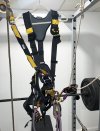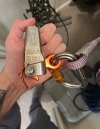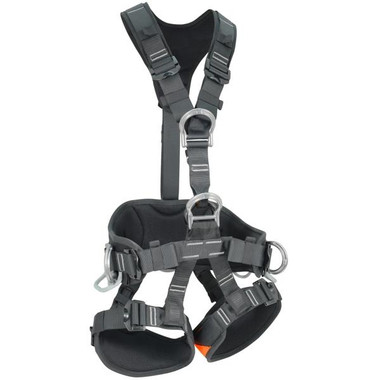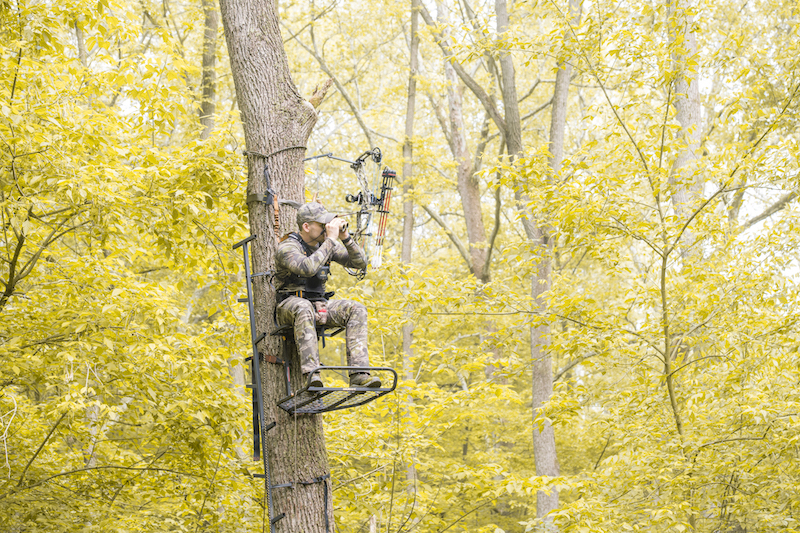1. I believe it's the responsibility of every climber and every equipment manufacturer to strive to eliminate both: 1) the possibility of a fall and 2) of the climber getting stuck in a tree after a mishap like a slip or failure of a component such as a stand, stick or step or aider. Assume that will happen to you multiple times in your career and promise yourself it won't be a problem.
2. I appreciate the perspective of a rope access techician, but our job is to NEVER need one. Sure, a FAH with chest straps and back connector is best for a fall. But I don't want to fall. Falls hurt. So just make it impossible to fall.
3. Ensuring that and our own general safety comes down to just 3 things 1) always be properly tied in 2) always have zero or just a few inches of slack, never more than a foot. 3) have a rappel plan that you can execute after any mishap and with nothing under your feet.
4. Getting knocked out? Well, a falling dead branch from the canopy could knock us out, but if that's a concern, we should have a helmet. But getting knocked out from a fall after a stand collapse isn't possible if we followed the rules above. I have tested that I can absorb and recover from a 9inch fall which is about the max slack I have ever allowed.
5. Rappel is easy. It can be practiced at ground height. I learned to rappel in my basement which has a 7ft ceiling.
6. I met up with my closest hunting buddy this year to ask him about how he uses his FAH. He always uses it but he couldn't even find his suspension relief strap. He never used it or carried it. He didn't understand the risk. He had no idea how he would get down with nothing underfoot. That's all I needed to know. Our setup needs to be foolproof. I bought him a saddle the next day. I showed him how to get down.
7. I looked at the link that CanopyStalker pasted above. Did ya see the part that says "one time use only"? How are we supposed to test and be confident that our system works if we have to throw it away after the 1st test? And what good is a system that's only protecting us when we are at height? We need to be protected the whole time, including ascent and descent. There are plenty of people who are lined up to sell us something if they can convince us we can use it. But it's our job to think it through... think of everything which could possibly happen and decide if we're ready for it... or how to eliminate the possibility of it happening.
8. The mere need for Suspension relief in a system shows it has failure modes I am not interested in. That sounds like a situation when i would rappel to safety. The attachment point way up over the back of our head... not interested. Now I need to operate a knife near my head to cut myself out in order to rappel? No thanks. I like my attachment point where i can easily access and control it.
9. Anyone who thinks a Linemans Belt or a FAH is a good plan chickens out when they are challenged to a round of the WHISTLE TEST game. It's been part of climb safety training forever: I'll go first... I climb the tree and you can blow the whistle 10 times. When you do, i let go with my hands and try to fall sideways, simulating the unexpected... but of course, I don't go anywhere and can always get to ground and safety... I have no slack and a rappel plan... nothing to cut myself on. Then it's my turn with the whistle... you get the idea. Everyone is an expert until it's time to get your legs ripped open by a sharp stick or get stuck on a FAH.
10. I didn't write this with my thumbs because I wanted to debate. I wrote it because an increasing number of my saddle brothers and sisters, actually GET IT. Your comments are much more educated than they were 2 yrs ago for certain. Some are reading and nodding... some are thinking. One at a time. Remember: Dont ask the guys who haven't had a problem with it. Ask the ones who have. Ask a rope rescue tech... not the salesperson who will say anything to get a sale. And when ya get safe, then go knock some sense into YOUR best friend. He's not gonna listen to me. -jrb
JrbTreeClimbing.com, affiliated with RockNArbor.com





